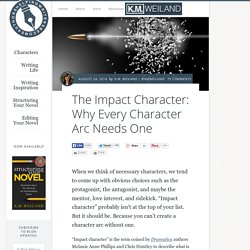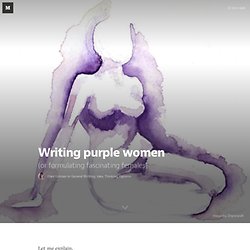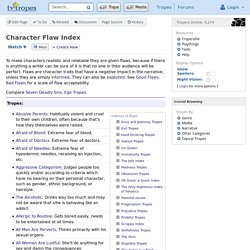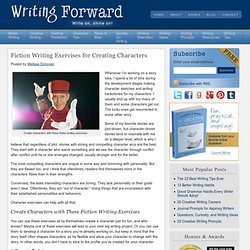

Character Stats Framework 2.0. 100 Character Quirks You Can Steal from Me. Okay, well, I decided that I wanted to contribute and as part of my new commitment to writing more and being more involved in the writing of others, I thought that it might be neat if I can come up with a list of personality quirks or traits that someone might find useful in fleshing out a character.

I mean, even though the plot is important, it doesn’t mean anything without a character that the reader can sink into and relate to. Here goes. Normal Traits/Quirks Okay, well, I said 100, but that’s only 50. I was going to write a list of supernatural or extraordinary traits/quirks, but I’m going to save that for later. Like this: Like Loading... Fantasy name generators. Names for all your fantasy characters. We’re losing all our Strong Female Characters to Trinity Syndrome. The Impact Character: Why Every Character Arc Needs One. When we think of necessary characters, we tend to come up with obvious choices such as the protagonist, the antagonist, and maybe the mentor, love interest, and sidekick.

“Impact character” probably isn’t at the top of your list. But it should be. Because you can’t create a character arc without one. “Impact character” is the term coined by Dramatica authors Melanie Anne Phillips and Chris Huntley to describe what is just as accurately termed by editor Roz Morris the “catalyst character.” This is the character who slams into your protagonist, catalyzes him into change, and has a major impact on his life. The impact character is the one who enables, empowers, or sometimes just plain forces another character(s) to change. All right, but riddle me this? What Is the Impact Character? The impact character may be a friend, or he may be a foe. Think of it this way: If the antagonist represents the story’s outer conflict, then the impact character represents the inner conflict.
The antagonist. Feminist Critique Tests. Writing purple women — Writing, Thinking, and Opinions. Can men be purple too?

Of course not. Men are green. In all seriousness, though, there shouldn’t be too much difference between writing male characters and writing female characters. A character’s gender may well colour their experiences and their outlook on life, but beyond that what makes a character purple (or green) is basically the same across the board: in fact, you could take everything I’ve written here and apply it to a character of any gender, race, and so on, and you’d end up with a character an audience can invest in. A well-written character is a well-written character, whether male, female, transsexual, hermaphroditic, genderless or just not quite sure. Unfortunately, for reasons far too myriad to list, writers typically do approach the writing of women differently than they do the writing of men.
What it comes down to, at the end of the day, is this: a purple character is written from the inside. The good thing? Nameplayground.com. NAME GENERATORS. Character Survey of Doom. Character Flaw Generator. Character Flaw Index. To make characters realistic and relatable they are given flaws, because if there is anything a writer can be sure of it is that no one in their audience will be perfect.

Flaws are character traits that have a negative impact in the narrative, unless they are simply informed. They can also be exploited. See Good Flaws, Bad Flaws for a scale of flaw acceptability. Compare Seven Deadly Sins, Ego Tropes. Abusive Parents: Habitually violent and cruel to their own children, often because that's how they themselves were raised. Fiction Writing Exercises for Creating Characters. Create characters with these fiction writing exercises.

Whenever I’m working on a story idea, I spend a lot of time during the development stages making character sketches and writing backstories for my characters. I usually end up with too many of them and some characters get cut. The lucky ones get resurrected in some other story. Some of my favorite stories are plot-driven, but character-driven stories tend to resonate with me on a deeper level, which is why I believe that regardless of plot, stories with strong and compelling character arcs are the best. They start with a character who wants something and we see the character through conflict after conflict until he or she emerges changed, usually stronger and for the better.
The most compelling characters are unique in some way and brimming with personality. Conversely, the least interesting characters are boring.